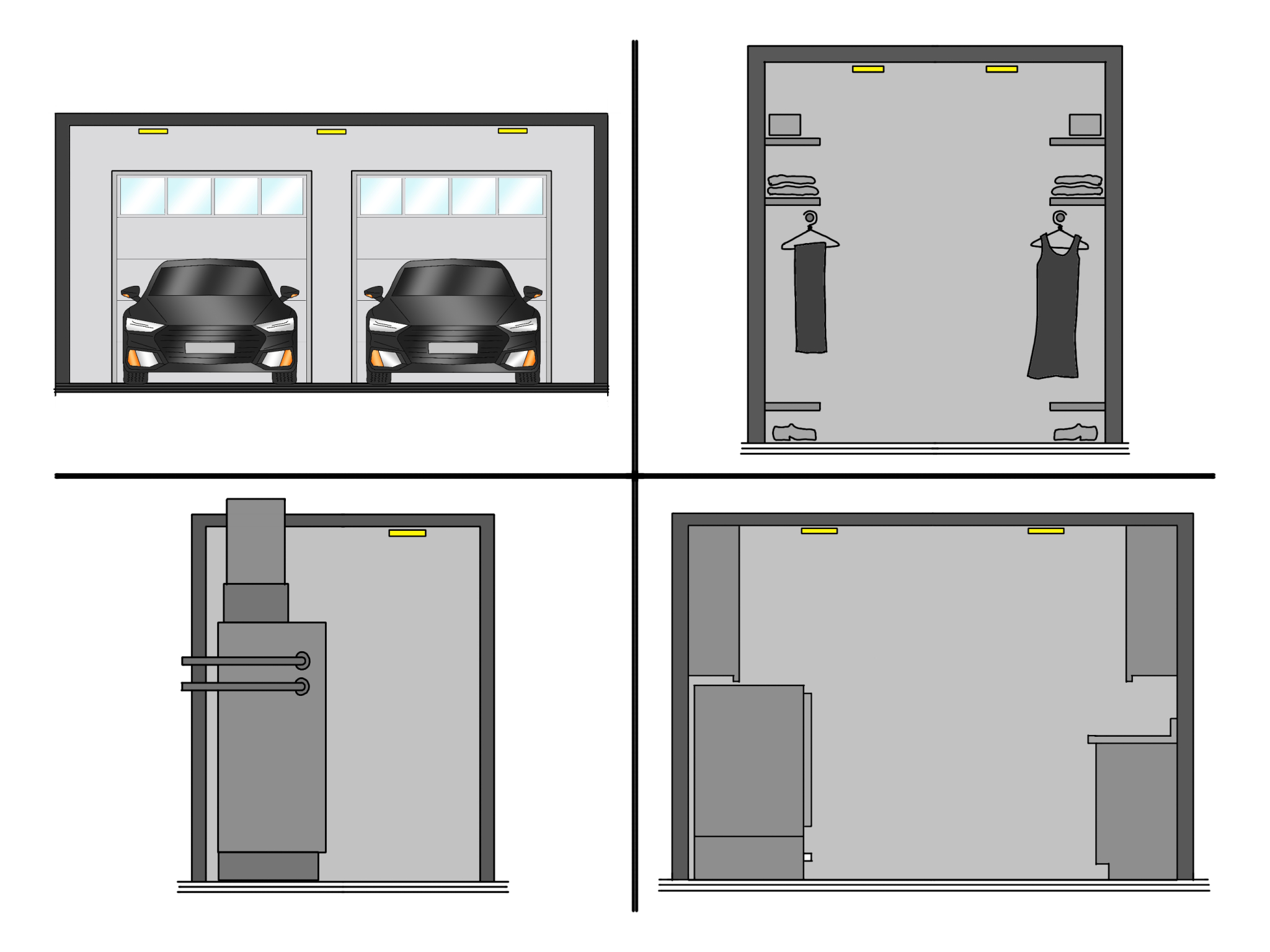An unpredicted grand finale to my 1THING posts takes me to the darkest places of our homes.
It is early December as I sit down to write the last 1THING: New Build post of the year. Like my own life, I started with a plan and a clear vision for where I was headed with the blog this year, made a few discoveries along the way, skipped some stops altogether, and ended up in a different place than imagined. If you had told me back in January that I would finish this series with a post extolling the virtues of LED disk (or wafer) lights, I would have called you mad.
Yet here we are. But why?
A few weeks ago I wrote a GEAR TALK post on optics that ended up being a bit of a rant against disk lights, the super-thin LED wafers that have replaced recessed downlights in the average American home. The post went a bit viral on LinkedIn (which for me means more than two people read it), with some commentators “feeling compelled to stick up for the disk light.” I’ll dig into some of those concerns in a future post, but for now I want to send a crystal clear message:
I hate disk lights.*
I love disk lights.**
In case further explanation is required, *disk lights have no place in kitchens, living rooms, bedrooms, or anyplace meant to be enjoyed. And **disk lights are awesome solutions for garages, closets, laundry rooms, and utility closets.
To emphasize the latter, I am dedicating this entire post to exploring when and where I believe disk lights make great solutions.
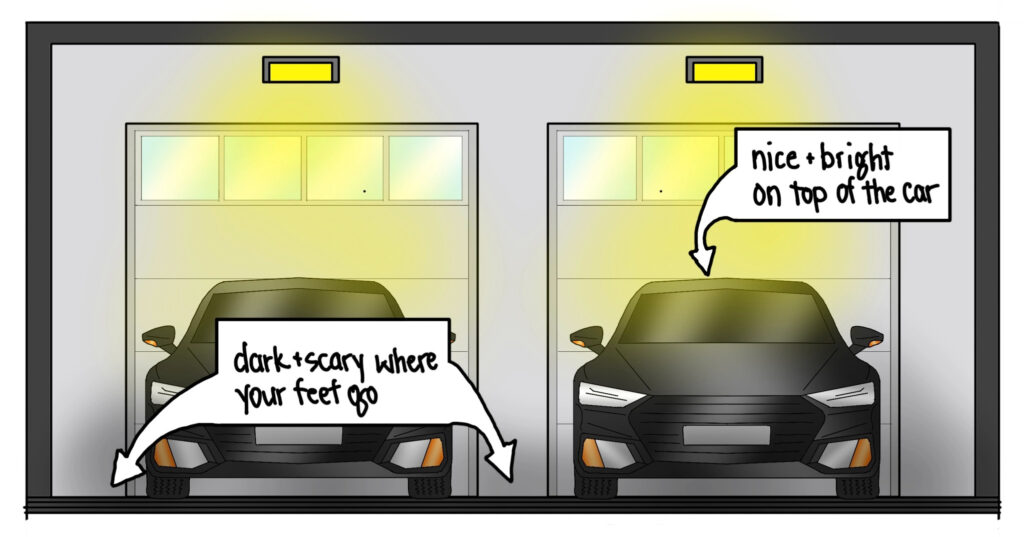
Let’s start with the typical garage. In most, the only light source is a bare bulb above each parking stall or a light on the opener itself. This puts the best light on the roof of your car, which is likely the very least important place to put light. You might want better light, for example, on the doorhandles or floor or shelves. I suppose occasionally folks want to polish the roof of their car, but the rest of the year that light is in the wrong place.
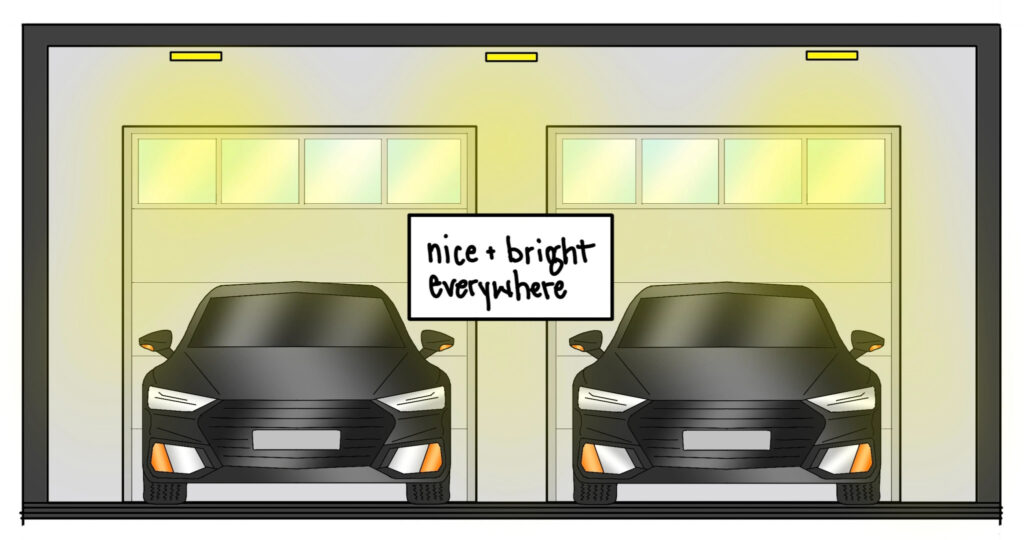
Disk lights to the rescue! The low cost and easy installation of disk lights makes it possible to spread them out in a garage, placing them where they will be more effective at lighting the things you actually need to see. This is one of the rare spaces in a house that I use a tidy geometric grid of lights, primarily because garages are utilitarian and multi-functional. Parking a car is just one thing we use our garages for – storing bicycles and lawnmowers, keeping our golf clubs and sports gear, washing a car or working on a project, even playing hockey (yes, that happened) are others. Disk lights make garages nice and bright, everywhere, for nearly every purpose. And since few folks use their garages as a relaxing space to entertain friends, the inherent surface brightness of disk lights (mitigated by using them in groups) is of little consequence.
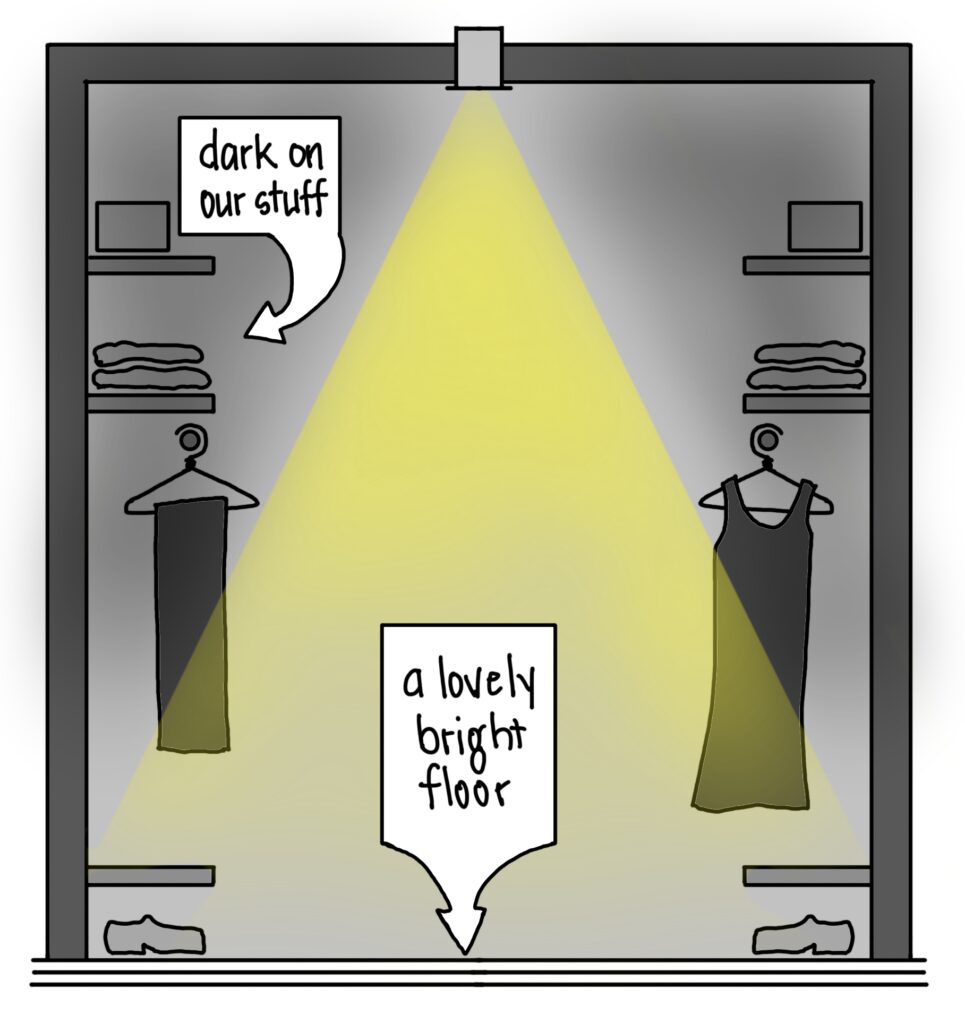
Closets are another space in which disk lights can, er, truly shine (sorry about the pun- light is so ingrained in our language that is just happens). I see home after home with recessed downlights in the middle of a walk-in closet, which provides lovely illumination to the floor, precisely where the least amount of clothing is stored (unless it’s my kids’ closets).
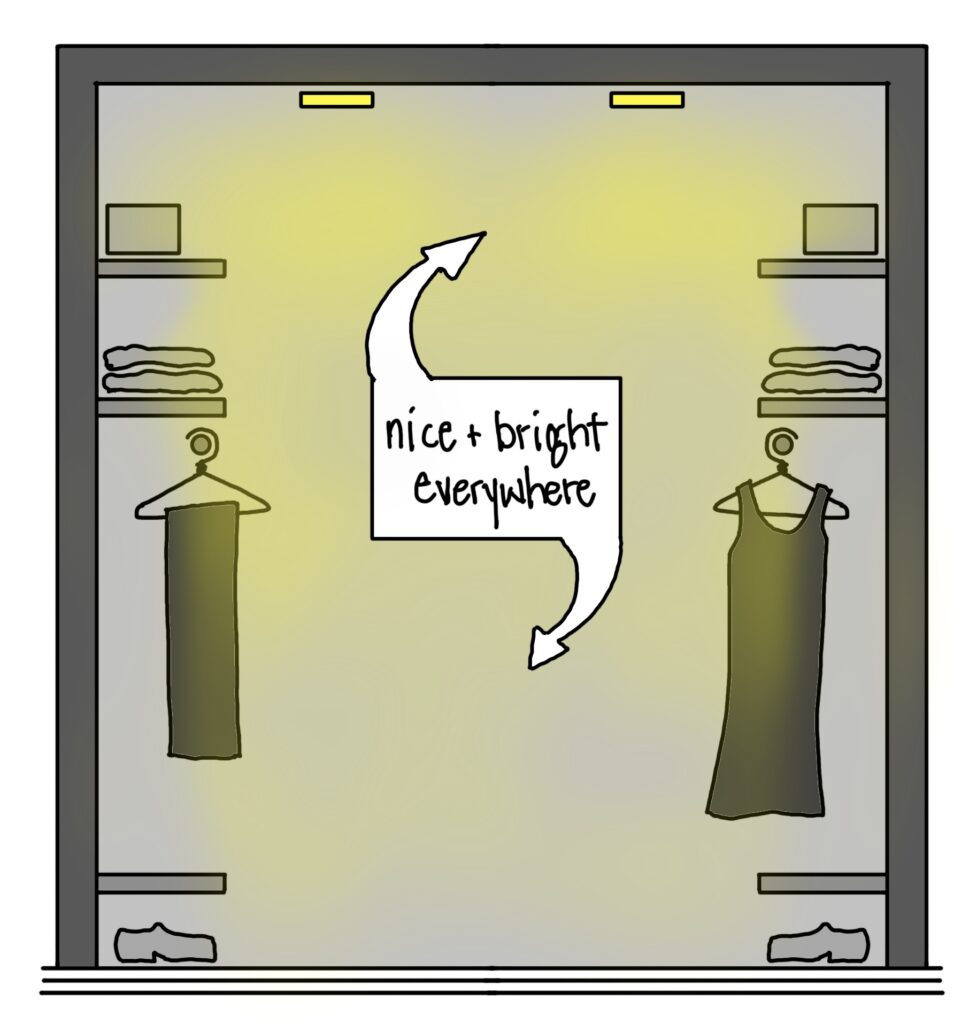
An array of disk lights, spread out in relation to shelves and hanging rods, gets light up onto the top shelves and onto the clothes in a much better fashion. And just because you used disk lights in the garage does not mean you have to use the same disk lights in the primary closet – there are larger, lovelier disk lights and variants that can look attractive while the produce good light. One downlight creates harsh shadows; two disk lights begin to chase them away.
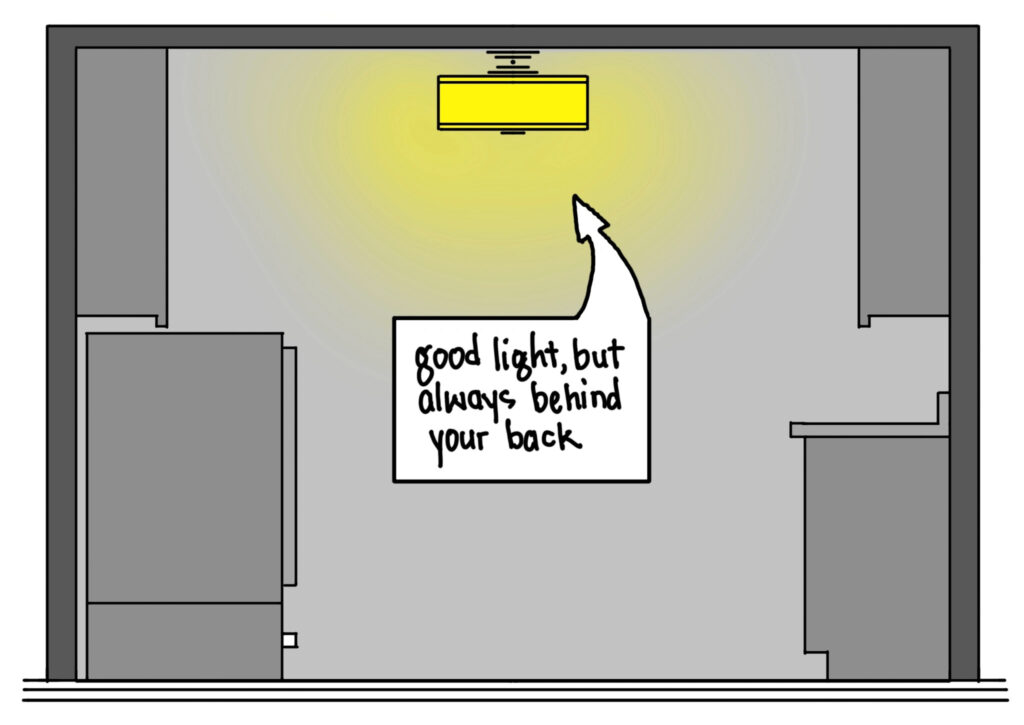
I have nothing against the lovely fixture drawn above in the laundry room. A semi-flush mounted decorative fixture can look good and provide useable light, but in this case we are putting our own bodies between the light and where we need it most, like counters and washers and dryers. We could use four decorative semi-flush mounts, but what if that seems too busy or too costly? Drumroll, please….
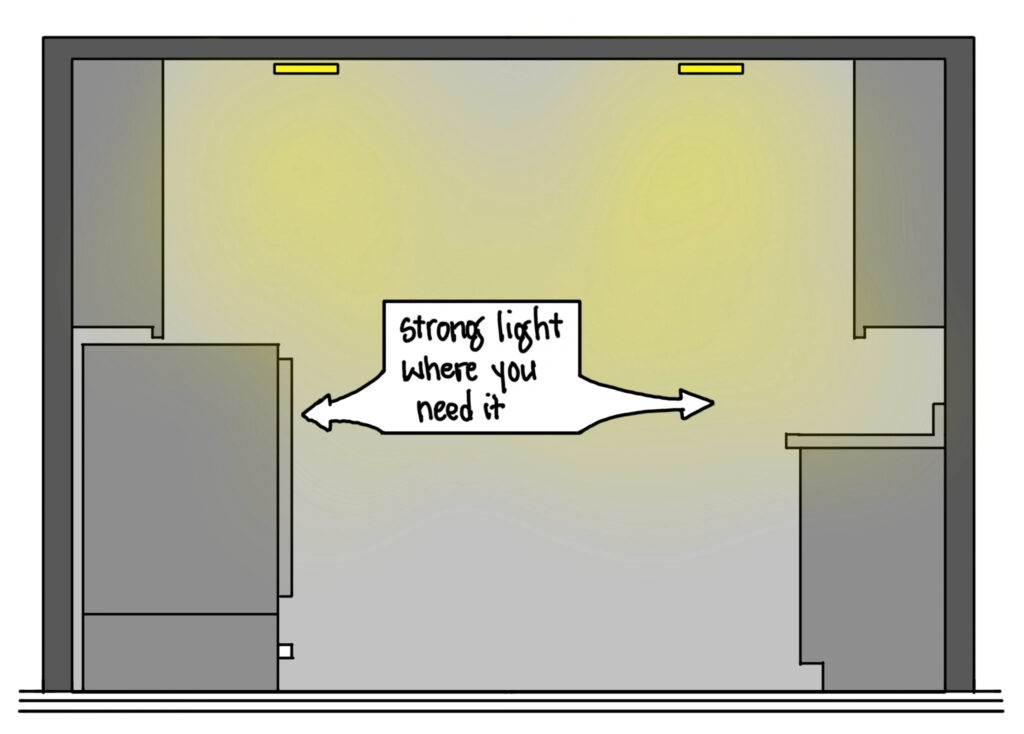
Once again, disk lights in groups, placed with care, can provide a larger volume of light that chases aways shadows and makes it easier to accomplish tasks. Why not have a well-lit laundry room? This morning I was ironing a shirt and found myself wanting disk lights. Don’t tell anyone, please.

Last, and probably least, let’s look at utility closets. These cobweb-filled closets host the machines that make our houses comfortable like air conditioners and hot water heaters. Most of the time we never visit them, but occasionally professionals come in to fix them up. You can be their friend (and save their flashlights from early retirement) by installing disk lights that outperform the one bare bulb typical of these spaces.
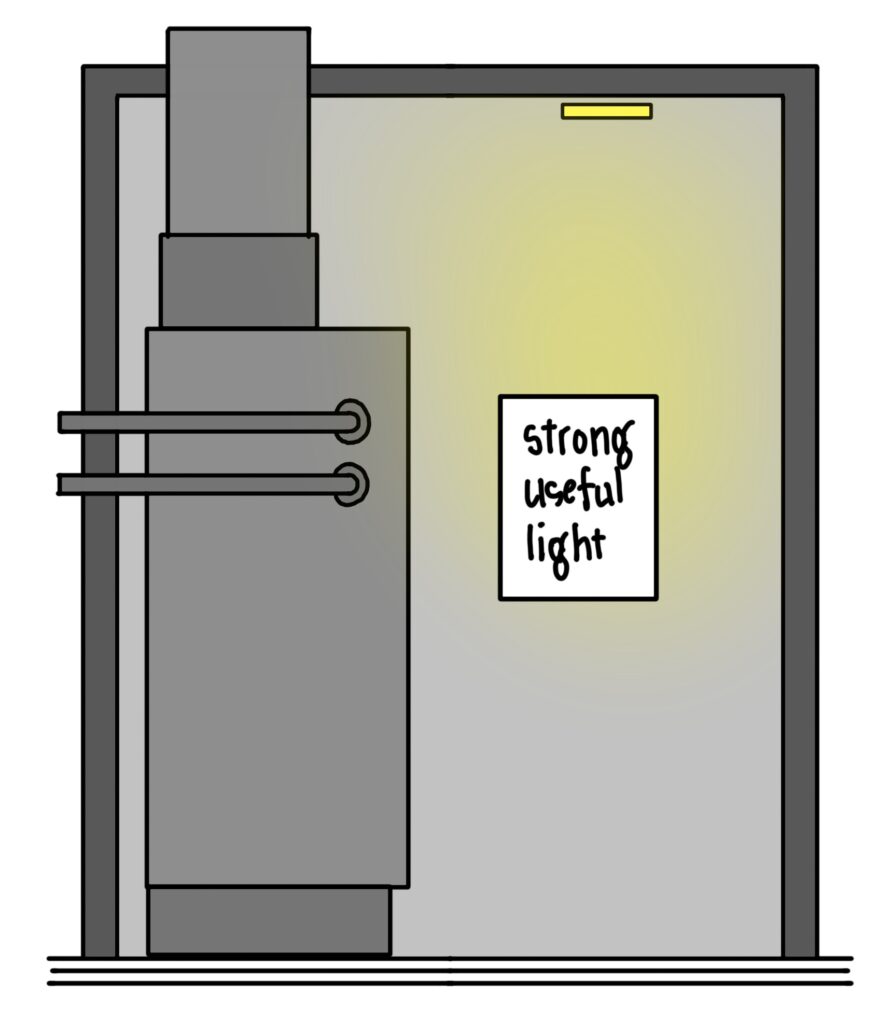
And, when you are in there relighting the pilot light on your hot water heater every few years, you will be glad you installed disk lights in your utility closet.
There. I did it. I found four spaces that are better served by disk lights than the most common solutions. Now I have this written record I can use when anyone accuses me of being a disk light hater.
Like a crafty politician, I’ll just avoid the question when folks point out my other posts that beg you to keep disk lights out of the rest of the house.
